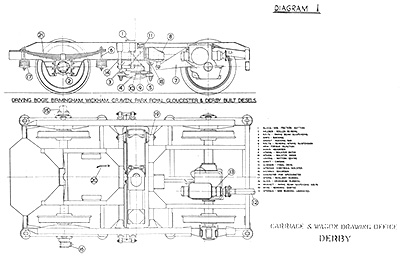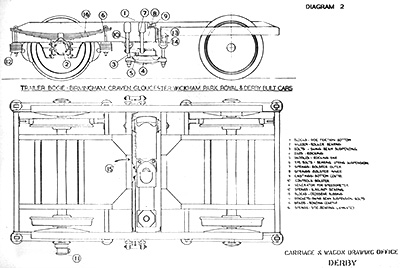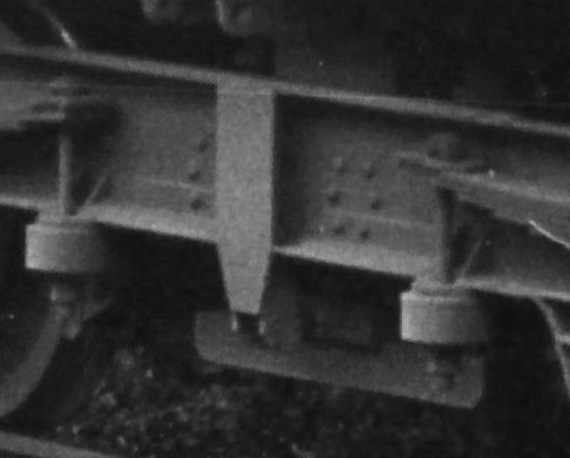DMU Bogies
Derby Style Bogies
These two partially cutaway drawings (power car and trailer car) show the component parts for the Derby style bogies:

The first image was taken during the construction are circa mid-1956. It shows a completed bogie being lifted (or dropped), thought to destined for a Derby Heavyweight (Class 114).

The second image shows one of the bogies built by a private contractor (Wickham) to the Derby design.
These booklets created by British Railways contains the above arrangment drawings and a list of all the component parts that comprise the bogie along with part numbers and drawing numbers. The links are PDFs: "Bogie for Birmingham Built Diesel Railcars" is 10 Mb; "Bogie for Park Roral Built Diesel Railcars" (5 Mb); "Bogie for Wickham Built Diesel Railcars" is 23 Mb.
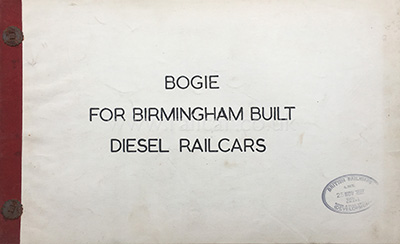
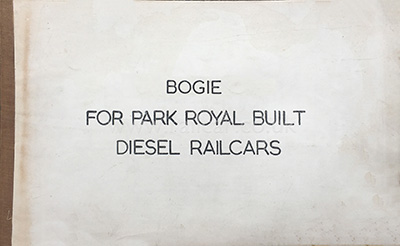
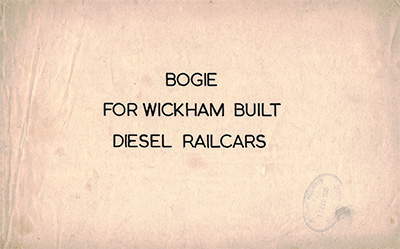
Sanding Equipment

The first vehicles built at Derby - the Derby Lightweights - had sanding equipment fitted at least to the West Riding and West Cumberland batches.
The image was taken during the construction of the West Cumberland vehicles, circa November 1954, the bogie in the foreground shows the sand containers for the sanding equipment, two on the inner face and one on each side in the centre. They would only be used on one axle per bogie, as only one was powered, and sand would be fed to one side of the wheel at a time depending on the direction of travel.

The Western Region (but not the LMR) Class 128 vehicles had sanding gear from new.
Circa 1979/80 some of the Marylebone Class 115 power cars were fitted with sanding gear, shown in the next image on M51656.
Suspension Lateral Damping
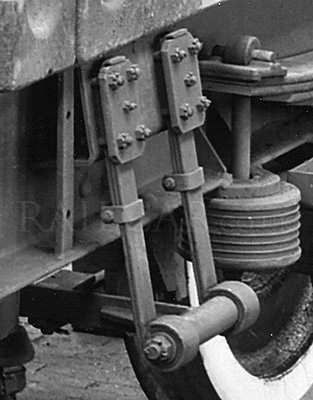
In general, lateral damping of the secondary suspension was provided by rubbing plates between the bolster and bogie frame. For most types, the Derby style of bogies originally had 'auxiliary lateral dampers'. These comprised two vertical leaf springs on each side, connected by a bar to control side-to-side movement of the spring plank.

The illustration is a cut-away plan view looking down on the bolster. The auxiliary lateral dampers are on the left and right of the bogie frames, the bar connecting to the spring plank is highlighted in blue. They are highlighted in red in the image below.
The types that had auxiliary lateral dampers of this type when new were: Derby Lightweights, E56000, Classes 100, 103, 104, 105, 108, 109, 112, 113, 114, 116, 119, 122 and 129.

Three classes had an alternative style: 115, 125 and 127, shown in the next image.
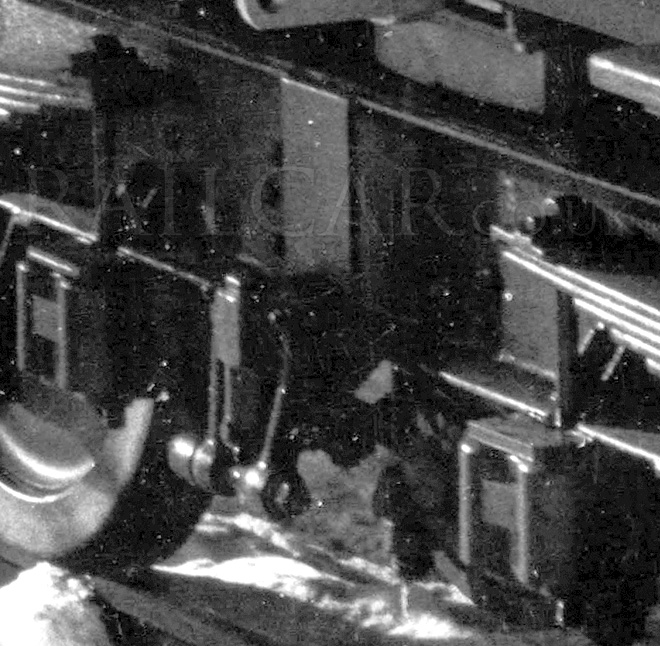
This alternative version involved a plate added to the bogie frame with a device added to the lower part (thought to be an Armstrong rotary hydraulic damper), presumably also acting as a damper to damp the spring plank lateral movement. Whereas the original style was off-centre - to the side of the bolster - this one was in the centre of the bogie.
E50000 had a style of its own.
These later types had no external lateral damper: Classes 107, 110, 117, 118, 121 and 128.
Both types of auxiliary lateral damper would be removed, but the brackets left in place, the original style with its two sets of five holes (first image below). Lateral damping on the modified bogies was provided by hydraulic dampers mounted inside the bogie frames.
The later style (second image below) had the visible mechanism removed. In its place a another plate was added to the bottom (caught in the sun). As far as I remember a rubber bump stop was fitted to inner side.


The later style modification differed on unpowered vehicles. The final image shows this on a Class 119 centre car, the lower portion tapering inwards.
Other Modifications
There were additional modifications done to bogies of some types to improve the ride quality at speed. This included the Class 115 units used on the Manchester-Liverpool/ CLC route, and Class 104s on the Manchester-Blackpool route (an example pictured below). The later would later be identified by a white bodyside stripe, for more details on this modification see the Birmingham Railcar Workgroup website.
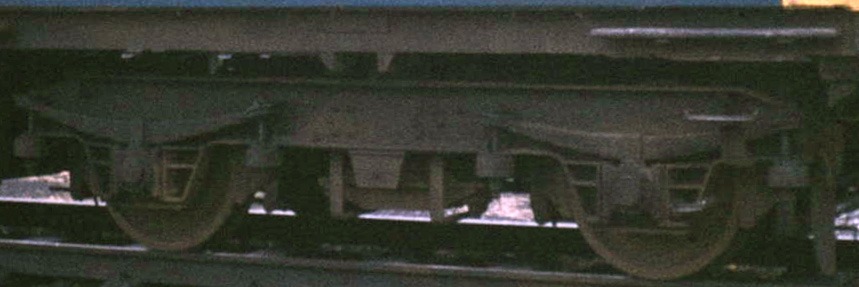
Introduction
Derby style
Met-Camm
Swindon / B4
Springs



